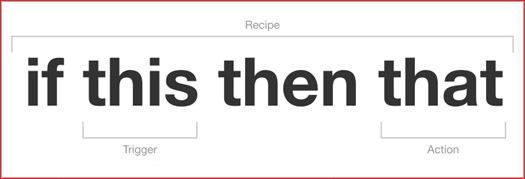The problem with most planning is that people simply don’t do what they have declared they want to do. There is a goal setting technique that claims a 300% increase in the likelihood of goal attainment. It is called the if-then plan.
Heidi Grant Halvorson, the associate director of Columbia Business School’s Motivation Science Center, wrote a featured article on the topic in the current Harvard Business Review, and in a recent issue of Fast Company.
Let’s look at how it works, and explore how we might work with it in congregational contexts.
If-then planning works by building contingencies into our neurological wiring. If ‘x’ (a condition) occurs, then I will engage in ‘y’ (a specific action). This very specific form of planning improves individual and group performance by sharpening focus and by prompting members to carry out agreed upon activities in a timely manner. It’s about creating instant new habits.
The problem with most goal setting is that the goals are stated very broadly. Many goal statements are not much more than a statement of intention.
-
We will improve communication within our staff team.
The difficulty with a broad statement of intent is that people rarely know what they are actually supposed to do to impact the condition, and even if they do know, they often don’t deliver.
If-then planning creates an explicit link between our intention and a desired behavior that is likely to produce the intended state. It creates a clear trigger for action.
• If we have reached the end of a program staff meeting, then we will stop to consider what information from our meeting needs to be communicated to the admin staff, and how that information will be delivered.
• If it is Tuesday afternoon at 4 pm, then we will have an all staff gathering around the water cooler, where our head of staff will provide a 5 minute update on the decisions made in the Executive Team Meeting that impact the rest of us.
The language may feel artificial and forced, but the tasks and the time frames are clear, which makes it more likely that people will engage the behaviors.
Halvorson recommends a four step process to create your if-then trigger statements.
1. Establish the broad goal.
-
The work schedule of all staff will be transparent, so that those with a legitimate need to find staff are able to reach them.
2. Break the goal down into specific, concrete subgoals.
-
a. Each staff member communicates their expected calendar of meetings/events for the upcoming week.
b. Staff members communicate when they are on campus and off campus.
c. Staff members working off campus communicate their availability for contact when off campus, and their expected time of return.
3. Identify detailed actions-and who, what, when and where-for reaching each subgoal.
-
a. Each staff member updates a shared online calendar on Tuesday morning, indicating their expected schedule of meeting & activities, both on and off campus, for the next seven days.
b. The receptionist oversees a color coded magnetic board that hangs next to the church office door. Each staff member moves their magnet to indicate their presence or absence from the building.
c. Each staff member completes a pink slip when they go off campus during the work day. The slip is handed to the receptionist. The slip indicates whether the staff member will be reachable during their absence from the building, how they may be contacted if needed, and when they are expected to return.
4. Create if-then plans that trigger the actions.
-
a. If it is Tuesday morning at 9:00 A.M., then staff will update their online calendar for the upcoming week.
b. If a staff member is leaving the building, then they will come to the office on their way out of the building, to move their magnet to “out” on the board, and to turn a pink slip into the receptionist.
c. If a staff member is entering the building, then they will first stop by the office to move their magnet to “in” on the board.
That’s the essence of an if-then plan. Give it a try on one of your tough behavioral challenges and let me know how it works for you!




